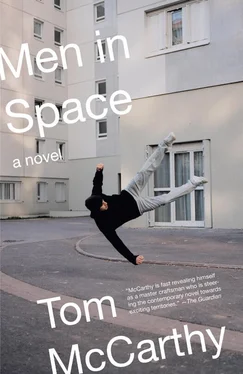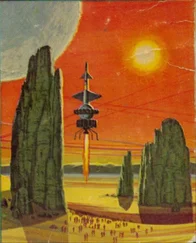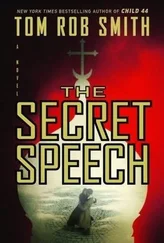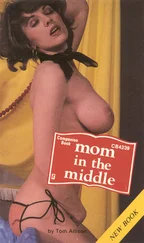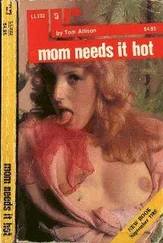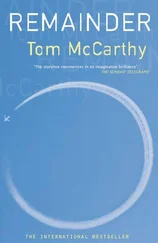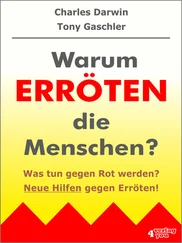“Four: that’s right. I remember that from Ondříček’s class.”
“He’s dead, you know.”
“I heard.”
“It’s got all four perspectives. There’s your linear one, from the mountain’s edge up away and vanishing towards the oval zone. And then the trees all being the same size — and all the secondary figures too — is, you know, flat, axonometric. That’s the dominant one here. And the arms of the — what, disciples? bystanders? these guys here — are converging out towards the viewer. That’s its one concession to perspective. More a nod in its direction, really. And the mountain’s surface is all curved, bending up towards the holy figure. But then see here, there’s this fourth one: how the top zone bends away into a totally different dimension. This slanting ellipse. I’ve never seen anything like it before. It totally disrupts the sacred geometric scheme.”
“You mean the three-four-one …”
“Right: triangle, square, circle. An ellipse ? What on earth was the painter thinking? Who did this?”
“Don’t know.”
Klárá leans forwards, picks the painting up and turns it over. There’s a stamped mark on the back, some modern Cyrillic figures, but no signature. She sets it down again.
“Who asked you to copy it?”
“This Bulgarian called Anton Markov. He used to live next door to Nick.”
“That’s your new English flatmate?”
“Yeah.”
“Is he an art dealer?”
“Who, Nick?”
“No, Anton.”
“No. I don’t know what he does.”
“Why does he want it copied?”
“He didn’t say.”
“That’s really weird.”
“Who do you think the saint is?” Ivan’s crouched down beside her and is stroking her hair as he asks this: miraculous …
“I was asking myself that just now. I can’t make out the letters. But it’s certainly not Christ.”
“Simon?”
“Because of the ships, right?”
“Right.”
“I was thinking that — but look: the men here aren’t fishermen. There are no nets. And they seem to be dismantling the ships.”
“Why would they do that? What’s the symbolism?”
Klárá sighs, shakes her head, sips her coffee. “Not one I’ve ever seen before. The obvious answer would be the soul leaving the body. It is an ascension, after all. Abandonment of the old vessel, its decay …”
“And the building? The mountain?”
“Same thing. Icons are cosmic maps. They conceive space metaphorically, as a series of levels leading into the world of the spirit. They narrate transcendence.”
“So …”
“So the building represents the urbs , the polis : civilization, society, cities. Everything that’s being left behind. Its windows are dark to represent the fact that the world’s lacking knowledge, awaiting revelation. The mountain is the passage upwards — a passage literalized by the floating upwards of the figure of the saint. The top circle round his head is — should be — pure spirit, God. Only it’s not a circle; it’s an …”
“But is he floating upwards?” Ivan’s peering forwards now, almost sniffing the painting. “Everything else seems to be going downwards. The trees point down. And these bird-men: they seem to be falling.”
“That could be to emphasize the saint’s ascendance.”
“Or to complement his fall. You must admit he doesn’t look too happy.”
“They never do. His look is unusual, though, I’ll grant you. His mouth is more widely open than you’d expect. He looks as though he were disappointed. As though there were no transcendence — and no pure spirit either, no God: he gets up into the sky, and all there is is this ellipse, this void, this slanting nothingness …”
“To me he just looks neutral. Deadpan. Disconnected. Maybe he’s stoned. You want to smoke one?”
“Sure.” She sits back, sips her coffee again. Ivan starts rooting around in a box behind the tins of paint. Klárá wipes a fleck of gold leaf from her cheek, then says: “You know, strictly speaking, your copy won’t be a copy.”
“Why not?”
“Because,” she shifts her weight as she turns to face him, “copying has always been part of the culture of the icon. These zographs travelled …”
“Zoo graphs?”
“Zographs: icon painters. Vitan, Nedelko, Chevinodola, the Zaharievs, and hundreds of minor ones whose names I can’t remember … They travelled around carrying little more than their tools and the Hermeneia , and they …”
“Carrying the what? The Ermenia?”
“The Hermeneia , with an H : the zographs’ rule book. It supposedly originated on Mount Athos, in Greece. They’d travel around, redoing already existing subjects: literally copying older paintings. So you get the same images repeating down centuries, mutating slightly with each iteration.”
“So Anton’s one’s a copy too?”
“Well, yes — but beyond that, for zographs, copies aren’t secondary pieces. They’re iterations of the same sacred event. Each time you iterate you partake of the event: belong to it, as much as the last iterator did. But …”
“Where are my cigarette papers?” asks Ivan.
She picks these off the floor beside her and throws them to him, then continues:
“But Anton’s asked you to distress the painting, right?”
“Distress it?”
“Make it look old.”
“Oh, yes. He wants an exact copy, not a new one.”
“Why would he want …” she begins, but Ivan holds up his hand to cut her off. Footsteps are coming up the final flight of stairs to the atelier: several pairs of footsteps. And there are two, three voices, one female and at least two male, speaking English. The footsteps stop and a key turns in the lock.
“That’ll be Nick now. And …” Ivan looks anxious. “You’d better dress.”
Klárá darts back into Ivan’s bedroom and pulls on her underpants and trousers just as the door opens. She hears Ivan say, in English:
“You didn’t precipitate,” and someone she assumes is Nick reply:
“The jelly was a bastard to find.”
“But you were successful notwithstanding?” Notwithstanding . She’d forgotten that word …
“We’ve got everything on your list. Only, two eggs broke in my pocket on the way back. My God, it’s warm in here!”
“The council sent some people round to fix the heating,” she hears Ivan tell him. There’s a clunk and wrinkle as a bag is set down on the coffee table. Klárá pulls her socks on and walks into the atelier’s main room. There are three men, all in their early twenties. One’s got short brown hair; one is tall, with wiry, darker hair; the third’s blond. The girl they’ve got with them is the same age, and wears a headband and a stripy jumper. She’s looking at Klárá in a less than friendly way. Ivan’s sifting through the shopping bags they’ve brought back with them. He pulls out a packet of gelatin and reads the instructions on the back.
“One-to-fifteen. But that’s if you’re just making jelly.”
“When you’re gessoing,” Klárá says, “you have to gradate as you layer. So you start out with one-to-eight and end with one-to-twelve. And always two or three measures of whiting powder into each saucepan of gelatin and water.”
“I used to eat this stuff in rabbit moulds,” the man with brown hair says in English to the girl. “When I was a kid.”
“Yeah, me too.” The girl’s accent is American, not English. “We had this one with Mickey and Minnie holding hands. Only it always sort of flopped and lost its shape when you took the mould off.”
“So did the rabbit one!” The young man with the brown hair’s all excited now. “Hey, Ivan, this is Mladen, who you’ve met already. And this is Roger.”
Читать дальше
